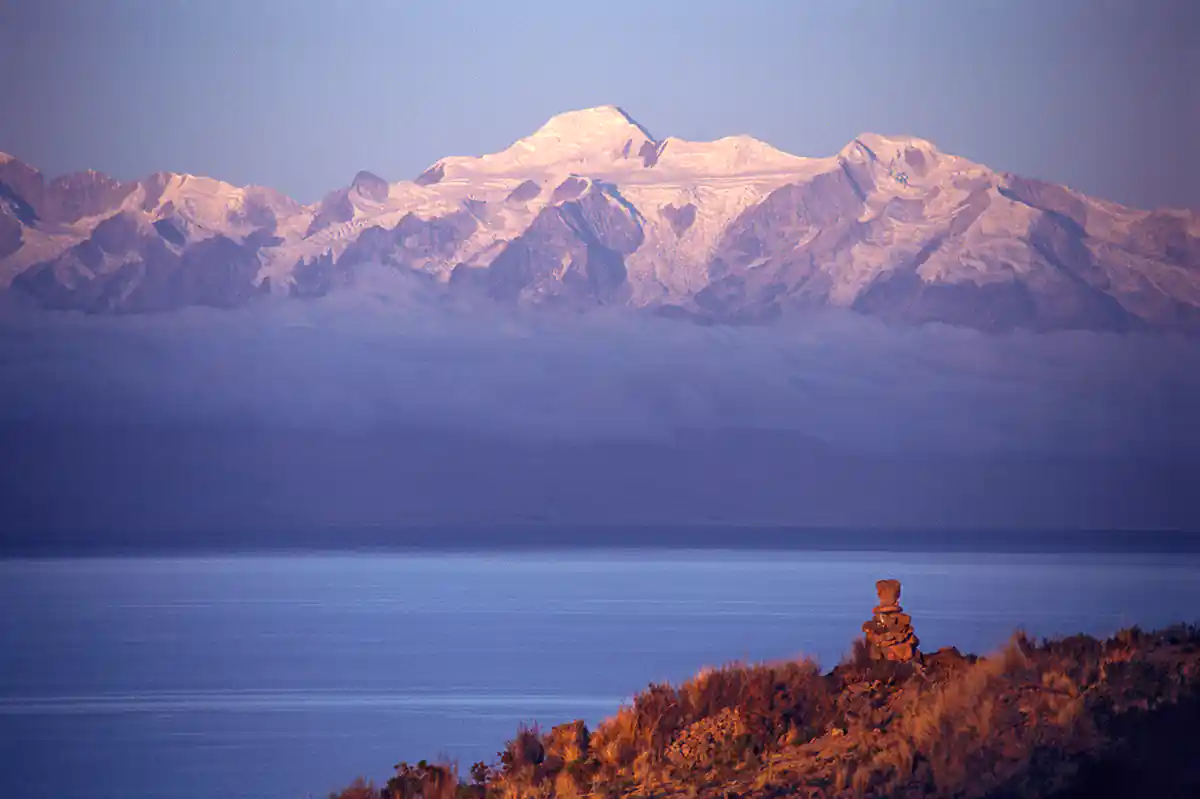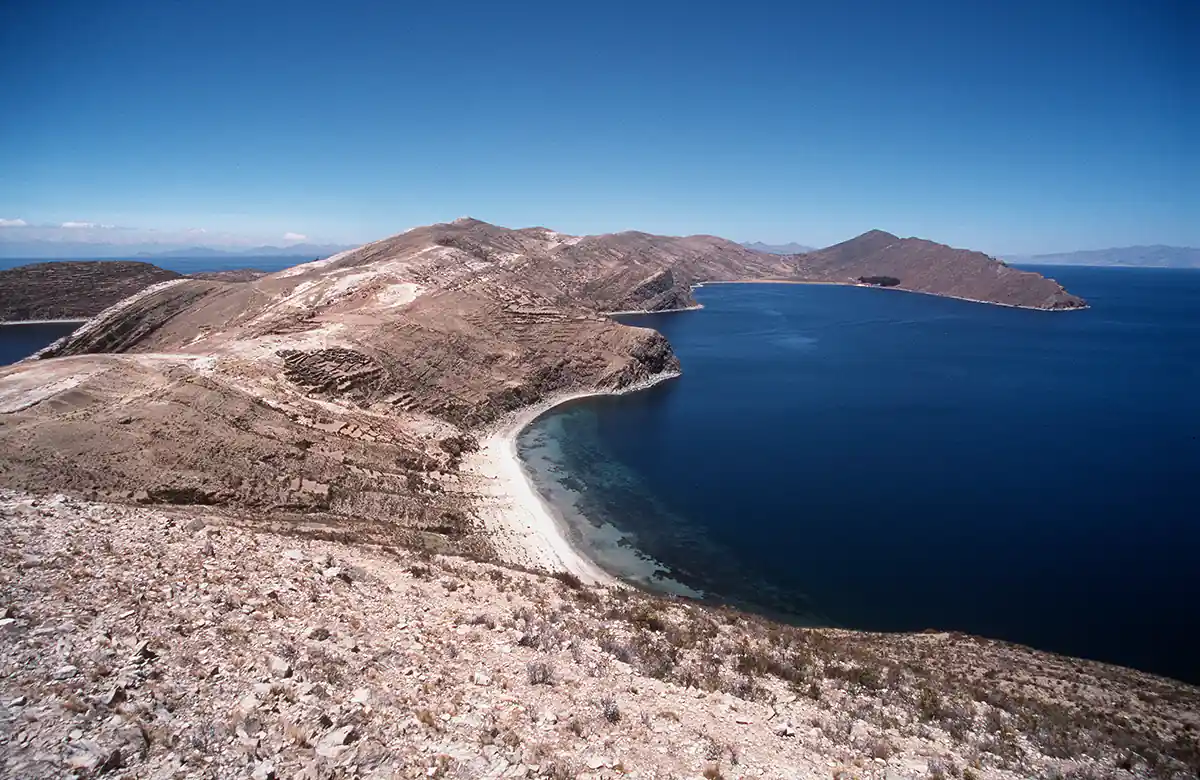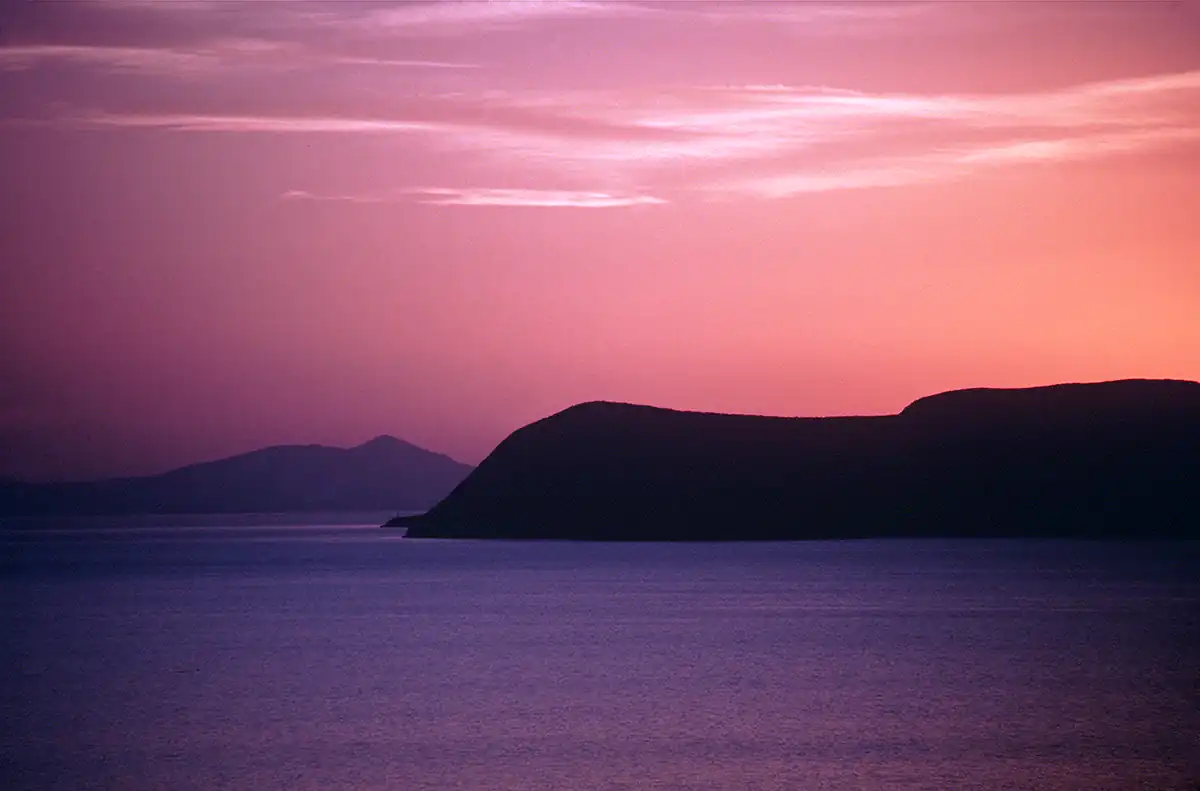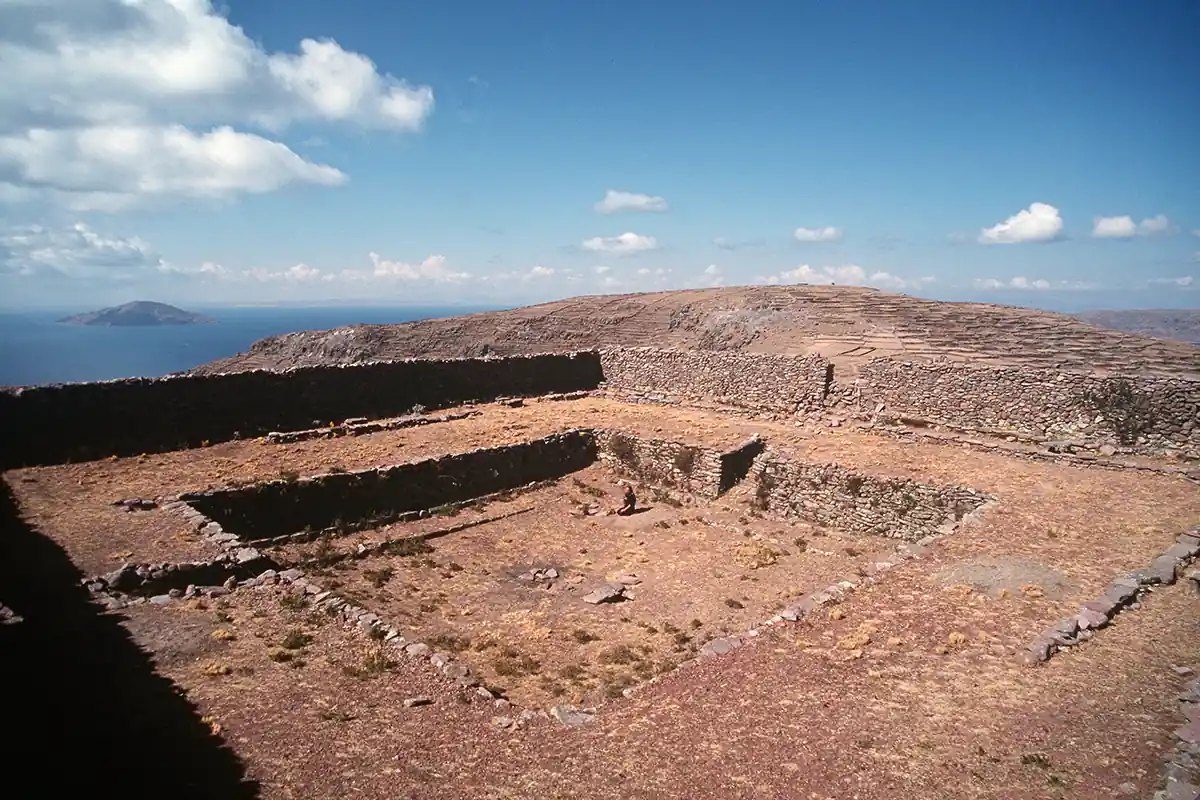Lake Titicaca
The mystic mountains of Ancohuma and Illampu soar majestically above sacred Lake Titicaca and are often cloaked by ethereal mists. The Andean region birthed several sophisticated cultures, including the Inca and Tiahuanaco, which venerated high peaks as the abodes of weather deities and nature spirits. Archaeological remains found on the summit of dozens of mountains throughout Peru and Bolivia reveal that pre-Columbian people regularly ascended peaks over 18,000 feet to perform ceremonies asking the spirits for life-giving rain.
These mountain spirits were known by different names. There was Illapa, the ‘Flashing One’, who, as Lord of storms and lightning, controlled the forces of wind and rain, hail and snow. The Aymara of the Bolivian altiplano had a similar deity named Tunupa, associated with Illampu and another great mountain, Illimani. The Incas called their mountain deities Apu, and their goddess of the earth was revered as Pachamama. Great condors, traditionally regarded as messengers of the mountain spirits and able to communicate through shamans, also watch over the sacred peaks. Today, people across the Andes still ascend these mountains, continuing ancient communion rituals with nature spirits and the weather gods. Mt. Illampu (20,867 feet) and Mt. Ancohuma (20,957 feet), part of the same massif of peaks and permanently covered in snow, are also favored by technical climbers and extreme skiers.
Far below these resplendent mountains is the lake of Titicaca. Situated at 12,506 feet and covering 3200 square miles, Lake Titicaca is over 1000 feet deep and has over thirty (mostly uninhabited) islands. Three of its main islands, Amantani, Isla de la Luna (the Island of the Moon), and Isla del Sol (the Island of the Sun), figure richly in archaic Andean myths, and ruins of enigmatic temples are scattered throughout the hilly islands. Legends say that long ago, in a forgotten time, the world experienced a terrible storm with tremendous floods. The lands were plunged into a period of absolute darkness and frigid cold, and humankind was nearly eradicated.
Sometime after the deluge, the creator god Viracocha arose from the depths of Lake Titicaca. Journeying to the islands of Sol, Luna, and Amantani, Viracocha commanded the sun (Inti), the moon (Mama-Kilya), and the stars to rise. Next, going to the island of Tiahuanaco, he fashioned new men and women out of stones and sent them to the four quarters, which began the world's repopulation. Tiahuanaco became, and has remained to this day, the sacred center of the Andes; it is to South America what the Great Pyramid is to Egypt, Avebury is to England, and Teotihuacan is to Mexico. Over millennia, the waters of Titicaca have receded and shifted, leaving Tiahuanaco twelve miles inland.

Martin Gray is a cultural anthropologist, writer and photographer specializing in the study of pilgrimage traditions and sacred sites around the world. During a 40 year period he has visited more than 2000 pilgrimage places in 160 countries. The World Pilgrimage Guide at sacredsites.com is the most comprehensive source of information on this subject.




